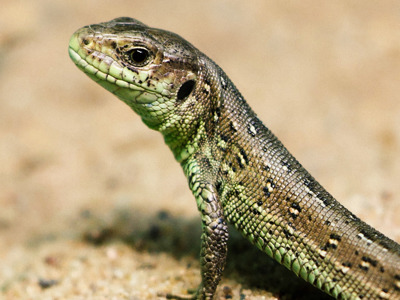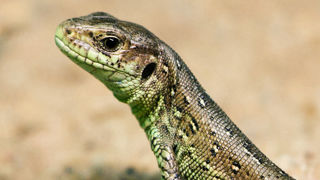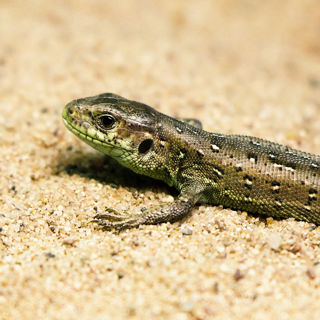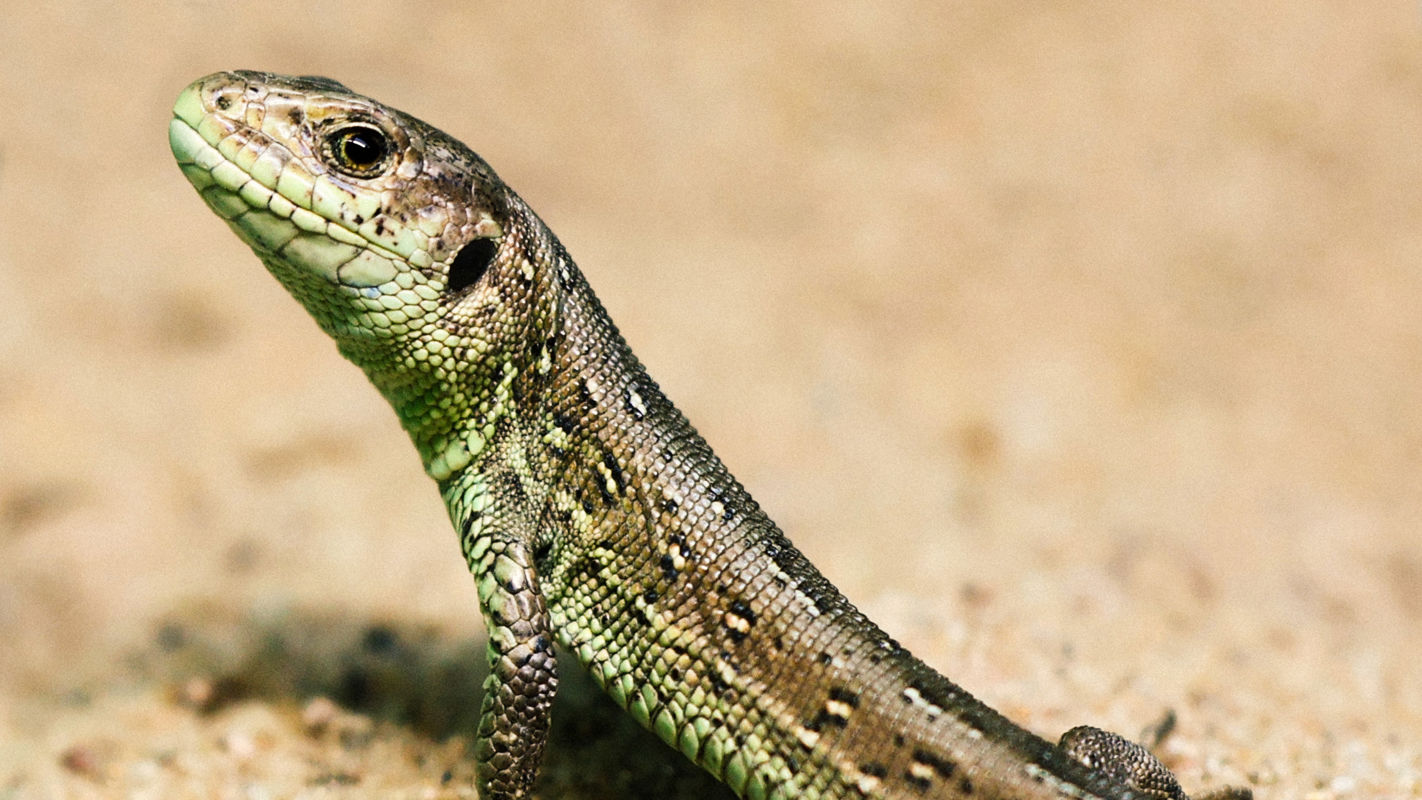
Sand lizards
Key Facts:
Scientific name: Lacerta agilis
Range: Western, central and eastern Europe, central Asia
Habitat: Sandy grasslands and sand dunes
Diet: Spiders and insects
Average size: Up to 20cm long
Life span: Up to 20 years
IUCN Red List: Least Concern
Sand lizards are a native species in the UK (they have evolved in this location and occur naturally here rather than being introduced by humans). Although sand lizards are considered a ‘Least Concern’ species according to the IUCN (International Union for Conservation of Nature) due to their widespread distribution across Europe and central Asia, they’re also one of the UK’s rarest reptiles

Sand lizards are part of a conservation effort where individuals from closely managed breeding programmes have been reintroduced into 11 counties across the UK. These reintroductions provide conservation education opportunities for surrounding schools and raise awareness for the threats sand lizards (and reptiles generally) face in the UK.
They are an indicator species (a species whose presence indicates the health of their surrounding habitats). This means their conservation will also contribute to other species who share these habitats.

Sand lizards dig thin burrows into sandy soil up to a meter deep to provide themselves with places to shelter and hibernate (spend the wintertime in a dormant state). Normally, the hole is created under vegetation to conceal their location
Adult males and females of this species look very different - males have green sides which get brighter between April and June to attract a mate; females are beige or grey and are larger, with a more slender neck. When males and females of the same species have differing physical features, they are sexually dimorphic
Sand lizards are a cryptic species, with populations from different locations appearing physically identical, but with significant genetic differences. For this reason, it’s important to properly manage these distinct populations.
Sand lizards are a ‘Least Concern’ species according to the IUCN Red List, meaning they are at low risk of extinction. However, sand lizards have become extinct in many areas of the UK with significantly declining populations in others. This is due to:
Habitat loss: Within sand lizard range, habitats are experiencing urbanisation (the process of making natural spaces more built-up), sometimes to develop tourist destinations like coastlines. As ectotherms (animals that rely on surrounding temperatures to regulate their body heat), sand lizards also need access to open, sunny areas to bask within, but these areas are becoming overgrown with vegetation. This decreases the amount of suitable habitat available for sand lizards
Predation: Domestic cats may pray upon small reptiles like sand lizards, reducing their in-situ (wild) population number
-
![362277039 664600909026309 8369226469419348221 N]()
What we're doing...
Zoos have participated in the growth of ex-situ populations that are suitable for re-introduction throughout the UK. Zoos can also play an important role in creating insurance populations for many species in case their wild populations require additional support. Our Conservation Education team are on hand to discuss the threats they face, and the challenges to habitat loss
-
![Sand Lizard 3]()
How you can help?
By choosing to visit and support conservation charities like Twycross Zoo, your money is contributing to the care and population management of creatures like sand lizards, along with many more animals facing significant threats in their wild habitats.



